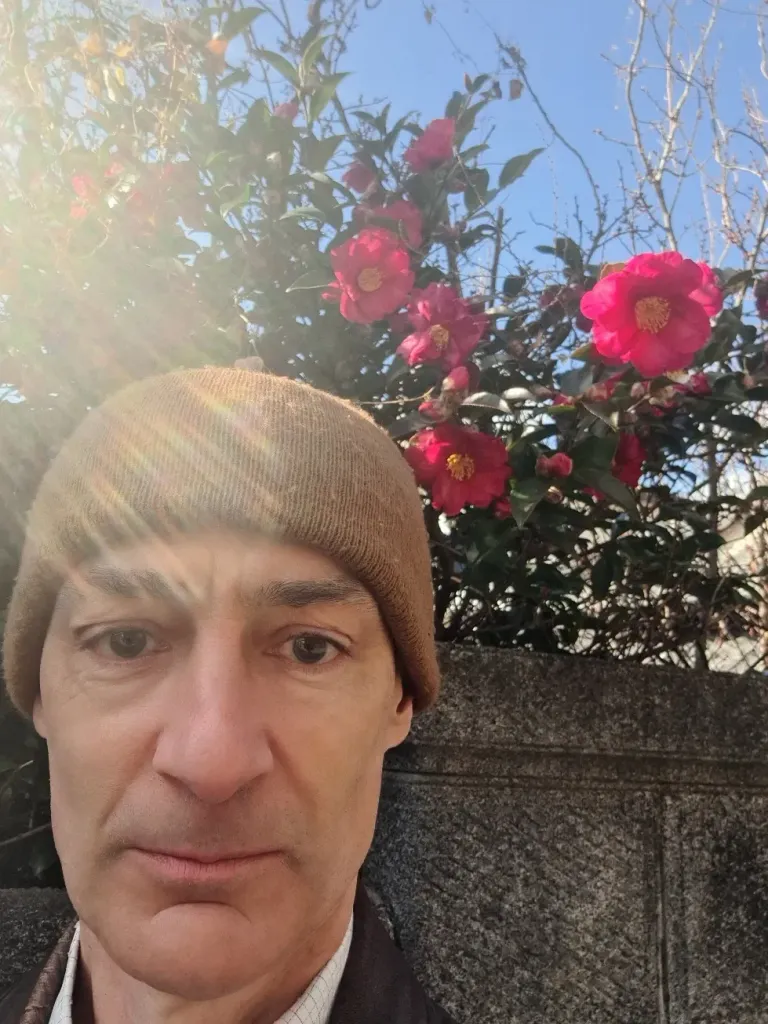Winter in Bloom: Discovering Japan’s Wintersweet and Camellias


In this morning's community centre English conversation class a couple of the students mentioned plants that bloom in January in Japan. One mentioned "roubai" (蝋梅), or "wintersweet," and another talked about "tsubaki" (椿 or ツバキ in katakana script), or "camellia."
Wintersweet
The 蝋梅 (rōbai), or wintersweet, is a fragrant flowering tree that blooms in January, making it one of the earliest flowers of the new year in Japan.
Its blossoms are small, delicate, and waxy in texture, with a translucent, pale yellow hue. Their appearance gives them their name, as "蝋" (rō) means "wax," and "梅" (bai) refers to plum blossoms. However, it is not actually a type of plum tree. The literal rendering of the Japanese name, "roubai" would be "wax plum" and was inspired by the resemblance of its blossoms to plum blossoms, rather than any botanical relationship.
The flowers are said to have a sweet scent that lingers in the crisp winter air. Well, today was a crisp, bright day, but there was quite a strong breeze, which might be why I failed to notice any hint of a sweet scent when walked down the hill from the community centre and stopped to admire the wintersweet.
One more thing about wintersweet; the blossom, apart from its shape, resembles plum blossom in another way. When the wintersweet blossoms there are no leaves on the trees except the odd brown leaf that is still hanging on in spite of autumn being long gone. Plum blossom also blooms on branches devoid of leaves - I don't think any autumn leaves remain on the plum trees when they bloom in February.
Camellia
More well known than wintersweet is the red camellia, camellia japonica (椿, ツバキ), the most iconic and widely recognized species of camellia in Japan, which blossoms in winter and early spring.
Camellia japonica is famous for the manner in which its blossoms fall. Unlike the camellia sasanqua, or the cherry blossom, which shed their petals one by one, the whole flower head of the camellia japonica drops from the branch.
It is said that this disconcerted some samurai as it reminded them of the way a head struck from the neck of an enemy would drop to the ground. No doubt, the blood-red colour of the flower head did nothing to mitigate that sense of unease when the flower head suddenly dropped from the tree.
However, for other samurai, the camellia offered more positive symbolism. Camellias were seen as noble flowers due to their beauty and ability to bloom in harsh winters. Red camellia flowers and the glossy evergreen leaves must have seemed to glow with vitality against the snowy landscapes of those distant winters.
Camellia oil (tsubaki abura) was also used by the samurai to keep their swords and their hair well oiled, so perhaps that offers a more mundane reason as to why, despite the old superstition, many samurai cultivated camellia.
The sound of a camellia flower head landing on the ground is the topic of quite a well-known children's song that goes like this:
ぽたり土の上に
小さい音がころがり落ちた
ぽたりまた聞こえる
雨戸を開けてよく見れば
ははは椿の花
Which, in romaji, goes like this:
Potari tsuchi no ue ni
Chiisai oto ga korogari ochita
Potari mata kikoeru
Amado wo akete yoku mireba
Ha ha ha tsubaki no hana
Which, being translated, may be rendered thus:
Plop onto the ground
A small sound rolled and fell.
Plop, I hear it again.
Opening the storm shutters and looking closely—
Ha ha ha, it’s a camellia flower.
After the class, as I walked down the hill from the community centre, I kept my eyes peeled for wintersweet and camellia. I found them both close together in a couple of places. The photo of wintersweet and camellia was taken in front of a local temple - the two trees were in blossom in the garden of the temple, and indeed it is not uncommon for those plants to be found in such august locations as tea gardens and temple precincts.
Cheers!
David Hurley
#InspiredFocus
For the best experience view this post on Liketu
Wow, it's amazing you have lovely flowers there in January. Is it still winter time in Japan? It's slowly getting warmer here now. These are really lovely flowers. Thank you for sharing additional information about them. I truly enjoy learning more about Japan. Happy Sunday!
Made in Canva
!ALIVE
_
This post has been curated by the Alive And Thriving Team, we curate good content in the We Are Alive Tribe that is on topic for #aliveandthriving, and it's included in our daily curation report on @aliveandthriving, plus @youarealive is following our Curation Trail.
Thank you for curating my blog post @iamraincrystal - yes, it's still winter. Saturday was a nice day, sunny, but with a cold breeze. The next blossom to look forward to is the plum blossom.
!BBH
!ALIVE
That sounds lovely. I !HOPE you'll share some photos too. Can you send some cool my way? !LOL
Great to be !ALIVE
lolztoken.com
The stock market.
Credit: reddit
@hirohurl, I sent you an $LOLZ on behalf of iamraincrystal
(2/10)
Delegate Hive Tokens to Farm $LOLZ and earn 110% Rewards. Learn more.